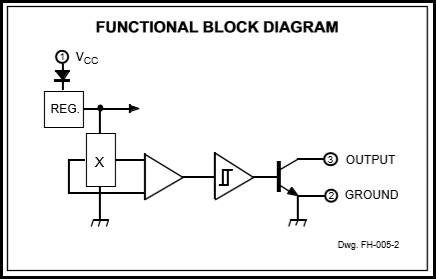Arduino Netduino: Hall Effect Switches, Keyes 003 Magnetic Sensor
In the Sunfounder sensor treasure chest of 37 sensors, there are a number of simple switches, relays and so forth, and the Hall Effect is one of these sensors, but it’s different. Most of the sensors uses some sort of change in resistance, but the Hall Effect is quite a bit different, it uses a combination of quantum properties that is the nature of transistors. For an in depth explanation of the Hall Effect, see:
From the tutorial here is a good way to image what is going on in the transistor. The Hall Effect was first discovered in the late 1800’s, and about 100 years later, the Quantum Hall Effect was discovered in 1975, so this is fairly new in the world of electronics and physics. The Hall Effect is important as it can measure high speed rotations of shafts, vibrations and so forth. As a Sensor on the Internet of Things, the Hall Effect is a sensor that doesn’t wear out. Unlike the Magnetic Ring we looked at earlier, the Hall Effect has no moving parts to wear out.
So the Hall Effect Transistor can be used quite simply to measure movement in a consistent manner. This means that you will like encounter Hall Effect devices in most jobs as a software designer or a computer engineering and definitely as an Electrical Engineer.
Inside of our Hall Effect Transistor and Circuit, you might want to view the circuitry, and here is the image provide by the manufacturer looks like:
In the Functional Block Diagram you need to understand that the triangle with the symbol in it is a Schmitt Trigger. The Schmitt Trigger works to eliminate noise and interference on data lines. A Schmitt Trigger also provides a sharp digital output with fast edge transitions.
Without that clean digital output it will be difficult to read on the Arduino or Netduino.
Not all Hall Effect Transistors come with this circuitry and are referred to as Analog Hall Effect Transistors. There is one of these Analog Hall Effect Transistors in the Sunfounder kit.
In the next blog we will actually program the Arduino to read the Hall Effect Transistor and Circuit.
